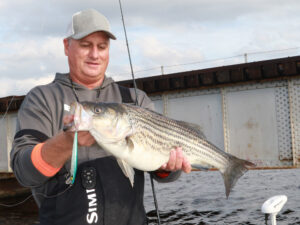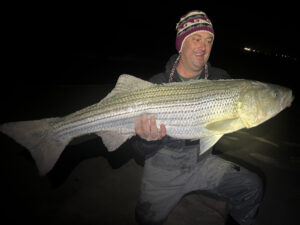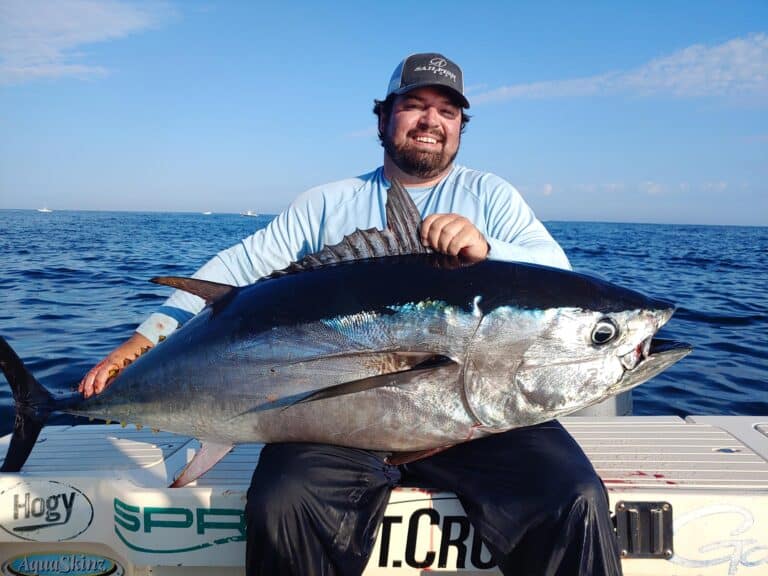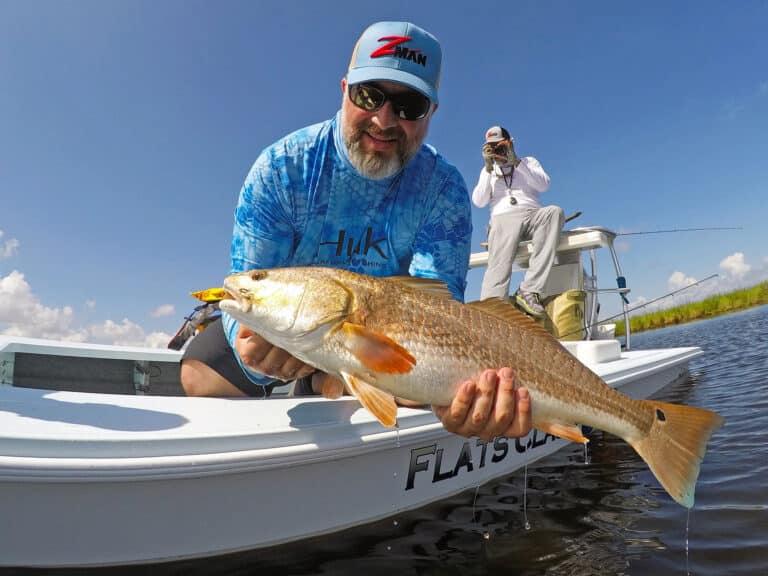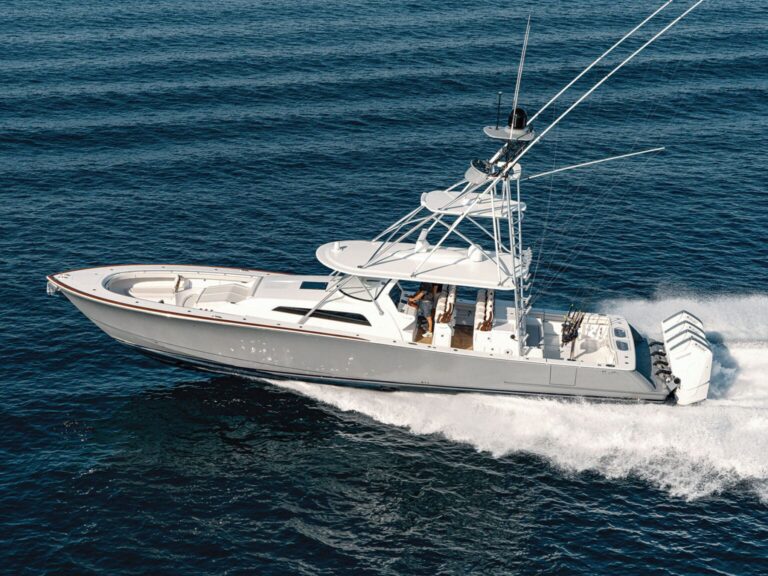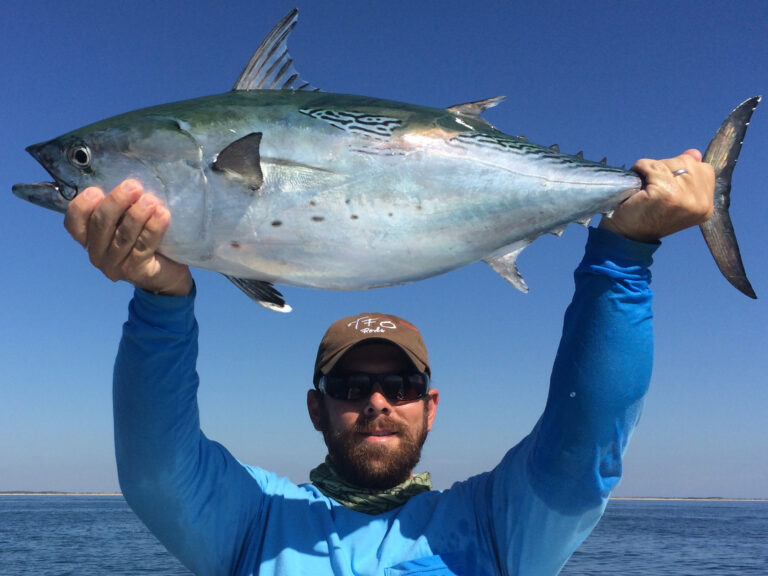
Few things frustrate us as much as staring at mark after mark on the fish finder, while our offerings go untouched. We’ve all been there — wondering what we’re doing wrong, why the fish won’t rise to take a bait, and what we could be doing differently to trigger a strike. I’ve even had people tell me that they “don’t believe their fish finder” because they see lots of fish but can’t seem to get a bite. Hmmm.
At times, even the most voracious offshore pelagics — including billfish, tunas, wahoo and mahimahi — simply refuse to move up through the water column. In this very situation, however, they may well take a bait that’s presented at their own level.
We have a number of ways to get baits down beneath the surface: planers, lipped lures and using oodles of lead are all options. But you’ll have a tough time finding someone versed in the use of downriggers who doesn’t believe them to be a superior tool for reaching deep fish in a number of situations.

Thermal Adjustment
“Fish don’t just sit up top, especially when there’s a strong thermocline,” says tournament angler and team captain Mark Henderson of Liquid Fire, who fishes everywhere from the Gulf coast up to his home port in North Carolina. “I’m always looking for bait, and I’m always looking for thermoclines, and a lot of the time they’re at about the same depth. With the downriggers, I can make a presentation right there.”
Henderson says he always runs two downriggers, and mixes up what’s offered on the lines — usually skirted baits, plugs or live baits — to give the fish some options. He’s caught species ranging from sailfish (as deep as 85 feet) to mahi to king mackerel.
Even when there isn’t a strong temperature break beneath the surface, Henderson still utilizes downriggers to give his baits a slightly different look. “I’ve run them as shallow as 3 or 4 feet below the surface,” he notes. “Changing the presentation just that much, with a common bait like a cigar minnow or ribbonfish that’s usually placed at the surface, sometimes makes a difference.”
John Unkart, a retired professional mate out of Ocean City, Maryland, and the author of the book Offshore Pursuit, also points to finding the thermocline for effective offshore use of downriggers. “Especially early-season bluefin tuna often seem to be at that break,” he says. “They won’t always come up to the surface, but with a downrigger, you can pull a simple but effective lure, such as a Drone spoon, right past the fish.”

The other downrigger application he advocates — and it’s a popular one — is trolling for wahoo. “A lot of times, they prefer a subsurface bait,” he says. “In that case, a purple-and-black Ilander lure rigged with a ballyhoo is the preferred offering.”
Capt. Dennis Forgione, of Free Spool Sportfishing in North Miami, Florida, uses downriggers in a different way. “I like them mostly for drift-fishing live baits, more so than for trolling,” he says. “With three lines, including a kite bait, one with a little weight, and a downrigger, you can cover all different depths. And by using the downrigger, I can run the bait with a very long leader. A leader so long — as much as 50 or 60 feet — that it doesn’t work well with an in-line weight. That sounds like a lot of line, but it will let the bait swim with more freedom, and act more naturally. Using a downrigger is the best way to accomplish this, by far.”
Forgione says this technique makes downriggers very effective for targeting sailfish, and also for blackfin tuna in spring. “They always seem to be swimming right along that temperature barrier,” he explains. “And you have to remember that the temperature and the currents can be completely different down below, sometimes as little as 20 feet down. I’ve seen it where the current is running north on the surface but goes the opposite way below a temperature break. You just never know. But where that change takes place, that’s going to be a depth where the fish gather. And these days, you can locate the thermocline easily with your electronics.”

Pay to Play
Effective though they might be at times, downriggers must be properly tended. “When you get a fish on the line, you need to get the downrigger ball up and out of the way fast,” Henderson explains, “or you risk a disaster. That’s why we use electric Cannon Digi‑Trolls, which have an auto-up feature that brings up the line at the press of a button.”
Unkart noted that not only do you have to get the downrigger ball up quickly to avoid tangles and cutoffs, but also, he says, the downriggers themselves are subject to a huge amount of stress. He cautions that older boats with worn rod holders can be damaged, and says he’s seen the boom on an expensive downrigger snap when subjected to the intense pressure created by offshore trolling speeds.
Read Next: How to Do It (Better) with Downriggers
Will a downrigger come into play in all your offshore fishing situations? It’s not likely. But will a downrigger expand your options, and allow you to apply the most effective tool possible when the conditions call for it? You bet, and that will help you turn those frustrating sonar marks into fish on the end of your line.

